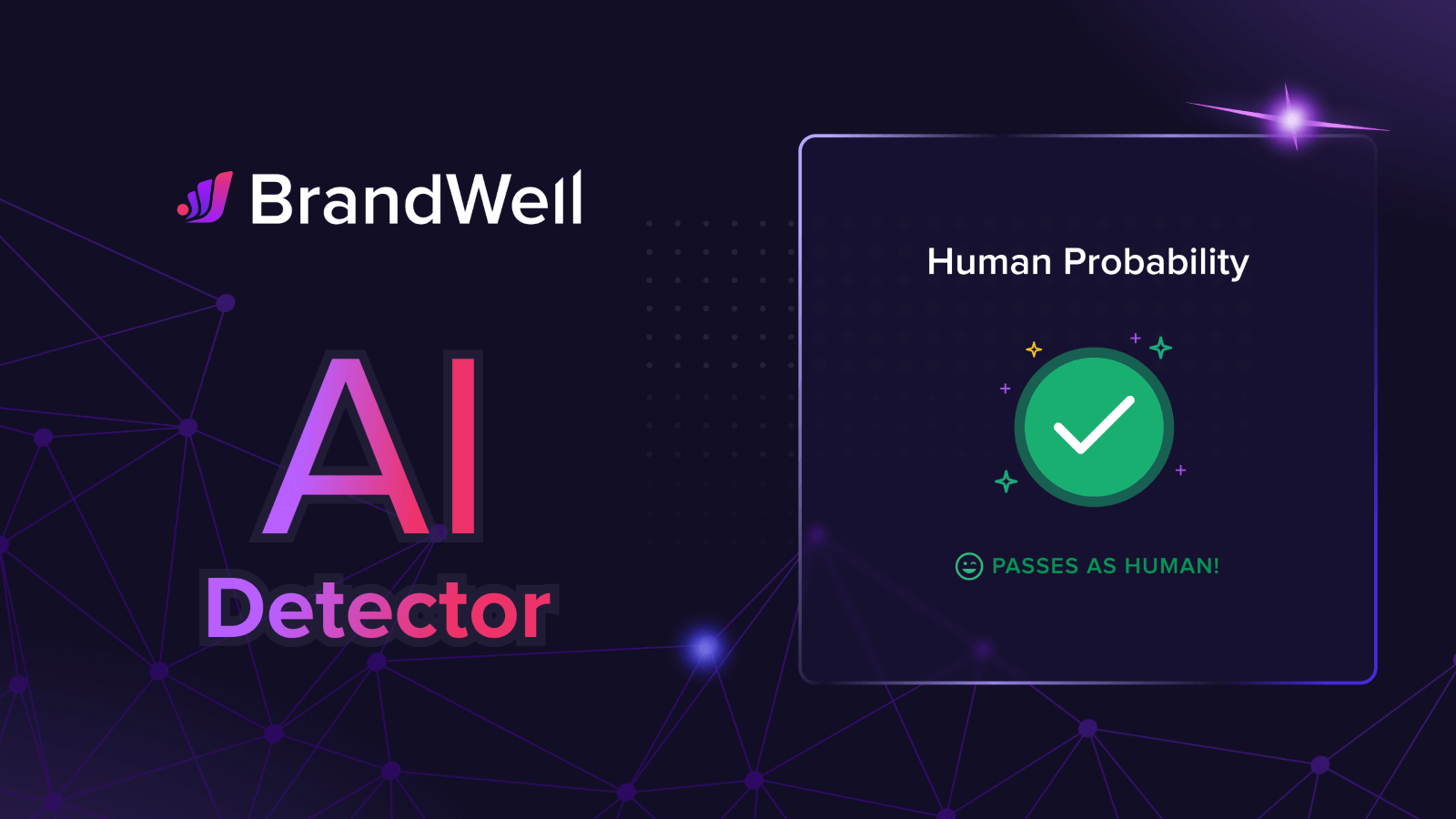Understanding the Significance of an Ai Detector in Today's Digital Landscape
As man-made intelligence proceeds to permeate numerous facets of material creation, identifying between machine-generated and human-generated material has actually become significantly complex. These tools not only help in identifying AI-produced material yet likewise promote the integrity of info dissemination.
The Surge of AI Content

The surge of AI-generated material has substantial implications for different industries, consisting of marketing, journalism, and amusement - ai detector. Organizations are increasingly making use of these modern technologies to boost performance, personalize web content, and engage target markets much more effectively. The capability to examine huge datasets allows AI systems to customize web content to satisfy details individual choices, supplying a more personalized experience
Nonetheless, the proliferation of AI material additionally raises crucial considerations for material makers and consumers alike. As AI comes to be much more incorporated right into web content production workflows, comprehending the subtleties of AI-generated product is important for preserving top quality and relevance in a quickly progressing electronic environment. Embracing this technological improvement while continuing to be alert concerning its effects is essential for stakeholders in the digital media landscape.
Difficulties of Authenticity
The introduction of AI-generated web content has actually presented significant challenges pertaining to authenticity in digital media. As algorithms become more innovative, comparing machine-generated and human-created material ends up being progressively tough. This obscuring of lines increases problems concerning the reliability of details and the capacity for misinformation to multiply.
Among the primary obstacles is the disintegration of trust fund among customers. With AI capable of producing reasonable message, photos, and video clips, people may find it testing to recognize real sources from deceptive ones. This apprehension can bring about a more comprehensive skepticism of all digital material, making complex initiatives to determine trustworthy details.
In addition, the implications for intellectual building are substantial. As AI tools create material based on existing jobs, inquiries relating to ownership and originality emerge. Content designers might have a hard time to protect their job from uncredited AI reproductions, weakening their resources and civil liberties.
Finally, the possibility for destructive uses AI-generated web content, such as deepfakes and automatic publicity, poses severe ethical and social risks. These difficulties highlight the immediate requirement for structures that support credibility in the digital landscape, guaranteeing that details remains credible and reliable.
Function of AI Detectors
Dealing with the challenges of credibility in electronic media requires innovative remedies, and AI detectors have actually emerged as an important tool in this initiative. These modern technologies are designed to examine and recognize material generated by fabricated knowledge, thereby facilitating the discernment between human-created and machine-generated products. The role of AI detectors prolongs past plain recognition; they likewise add to maintaining the stability of information consumed by the public.
AI detectors use innovative algorithms to scrutinize different components of electronic content, including linguistic patterns, structural anomalies, and certain pens that show automation. Their application extends several fields, consisting try this out of journalism, education and learning, and social media, where the presence of AI-generated material can cause false information and disintegration of depend on.

Benefits of Making Use Of AI Detectors
Ensuring credibility in digital web content symbolizes the fundamental requirement for rely on details sources, and AI detectors work as a powerful ally in this search. By determining AI-generated web content, these tools aid preserve the honesty of info, therefore securing customers from misinformation and boosting overall material quality.
One of the key benefits of utilizing AI detectors is their capacity to improve material verification processes, dramatically decreasing the moment and initiative required to examine the credibility of digital materials. This performance allows content designers, instructors, and companies to concentrate on creating reliable and premium details, instead of spending excessive resources on fact-checking.
Additionally, AI detectors foster responsibility amongst material creators. The understanding that AI-generated material can be recognized urges openness and moral practices in content production. This, in turn, contributes to a much more educated digital neighborhood, as individuals can with confidence involve with confirmed details.
Future of Web Content Confirmation
As the landscape of electronic material proceeds to progress, the future of web content confirmation offers both tests and chances for maintaining credibility. As AI innovations breakthrough, so also do the approaches for producing and distributing misinformation (ai detector). This arms race between material makers and confirmation tools demands the growth of a lot more advanced AI detectors with the ability of discerning real web content from controlled or produced material
Furthermore, the surge of look at this web-site decentralized innovations, such as blockchain, holds promise for confirming content provenance, making sure that users can map the beginnings of the info they eat. Ultimately, the future of web content verification will rest on our ability to introduce in the face of progressing threats, promoting an electronic environment where credibility is recognized and supported as a basic principle.
Final Thought
In final thought, the expansion of AI-generated material requires robust systems for authenticity verification. The future of content verification hinges on the effectiveness of AI detectors Resources in maintaining reliability across various media platforms.
AI web content production devices, such as all-natural language processing designs and generative adversarial networks, enable people and organizations to generate top notch material at unmatched speeds and reduced prices.
Nevertheless, the expansion of AI content also elevates crucial considerations for content makers and customers alike. As the class of AI-generated content proceeds to progress, the function of AI detectors becomes significantly important in protecting credibility and advertising transparency in electronic communication. The knowledge that AI-generated web content can be determined encourages openness and ethical techniques in material production.As the landscape of electronic content proceeds to develop, the future of web content verification challenges both provides and opportunities for keeping authenticity.